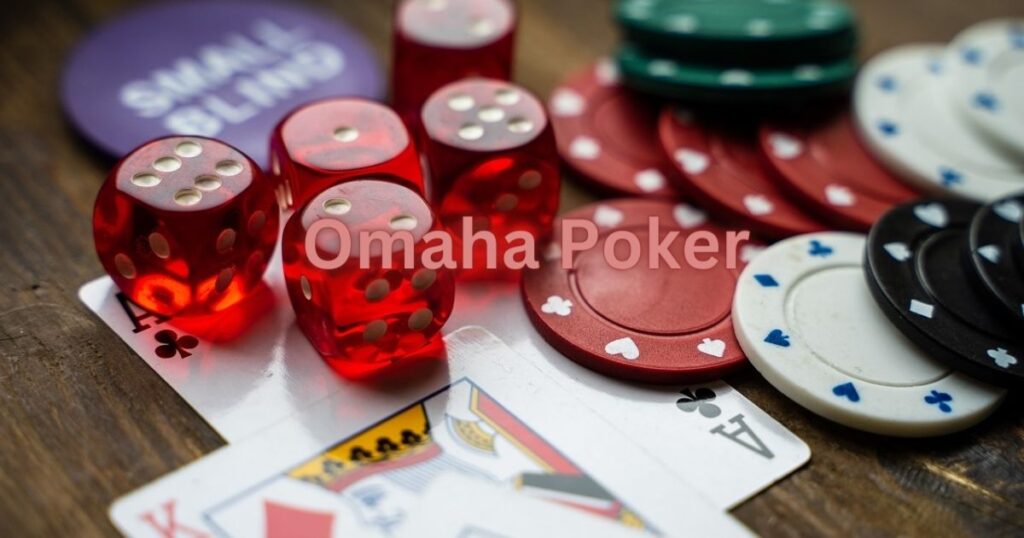
Discover the key to Omaha poker success as we delve into the world of aggressive gameplay. Learn why playing aggressively is essential in Omaha poker and how it can give you a winning edge. For more insights and strategies, visit Tmtplay Net.
Welcome to the exciting world of Omaha poker! If you’ve ever dabbled in the realm of card games, you’ve probably heard of Texas Hold’em – the kingpin of the poker world. But there’s another captivating poker variant that has been gaining popularity steadily: Omaha poker.
Omaha poker is like the spirited sibling of Texas Hold’em. It shares many similarities, such as the use of community cards and a combination of hole cards to form winning hands. However, Omaha introduces a twist that sets it apart – you’re dealt not two, but four hole cards. This extra pair of hole cards may seem like a small change, but it adds a whole new layer of strategy and complexity to the game.
Now, you might be wondering why we’re here today. Well, we’re here to explore a vital aspect of Omaha poker that can make or break your game – playing aggressively. In the world of poker, aggression is your secret weapon, and in Omaha, it becomes even more potent. So, let’s dive into the reasons behind the Omaha poker community’s love affair with aggression and how you can harness its power to become a formidable player.
Before we delve into the realm of aggressive play, let’s ensure we’re on the same page when it comes to Omaha poker. Unlike some other poker variants, Omaha is all about strong hands. With four hole cards at your disposal, the potential for powerful combinations is significantly higher than in Texas Hold’em.
The basics remain familiar – you’re aiming for the best hand possible. But here’s the twist: in Omaha, you must use exactly two of your hole cards and three of the five community cards to form your hand. This rule makes hand selection a critical factor in your success.
Now, let’s clarify why understanding the rules of Omaha is crucial before we talk about aggression. In any poker game, your strategy should always be grounded in a solid understanding of the fundamentals. Knowing the rules and the unique aspects of Omaha poker will set the stage for you to make informed decisions when the pressure is on.
So, what’s all the buzz about playing aggressively in Omaha poker? Well, it turns out that aggression is like a secret sauce that can turn an average player into a formidable one.
Picture this: you’re at the poker table, and you’re holding a hand with great potential – maybe a pair of Aces and two suited connectors. In Omaha, these kinds of hands can be goldmines. But here’s the thing – your opponents also have strong hands more often than not.
This is where aggression steps in. Playing aggressively means taking control of the game and dictating the pace. It involves making bold moves like raising and re-raising, putting pressure on your opponents to make tough decisions. When you do this, you’re not only increasing the size of the pot but also making it less likely that your opponents will draw to a winning hand.
Now, why does this aggressive style work so well in Omaha, compared to other poker variants? The answer lies in the nature of the game. With four hole cards, players often have multiple draws and potential strong hands. Aggressive play forces your opponents to fold their weaker holdings, reducing the chances that they’ll hit their draws.
In simpler terms, aggression in Omaha poker is like having the wind at your back – it propels you forward and keeps your opponents guessing.
To truly grasp the power of aggression in Omaha poker, let’s break it down into different phases of the game. We’ll start with the pre-flop action – the betting that occurs before the community cards are revealed.
In Omaha, your starting hand is everything. You’re dealt four hole cards, and from these, you’ll need to select the best combination. This means you’re more likely to have a strong starting hand compared to Texas Hold’em.
Now, here’s the kicker: playing these strong starting hands aggressively pre-flop can give you a significant advantage. When you raise or re-raise before the flop, you’re sending a clear message to your opponents – “I have a powerful hand, and you’ll have to pay to see the flop.”
This aggressive pre-flop play serves two essential purposes. First, it reduces the number of opponents you’ll face post-flop. In Omaha, facing multiple opponents with a strong hand can be risky, as there are more opportunities for someone to outdraw you. Second, it builds the pot – the more you put in before the flop, the more you can potentially win.
Imagine you’re holding two Aces, a King, and a Queen – a very strong hand. Instead of just calling the big blind, you raise aggressively. This action might force weaker hands to fold, leaving you in a heads-up or three-way pot with a substantial advantage.
Aggressive pre-flop play not only increases your chances of winning the hand but also puts you in a favorable position to control the action post-flop.
The pre-flop action sets the stage, but the real drama unfolds post-flop when the community cards are revealed. This is where aggressive play can truly shine and make a significant difference in your Omaha poker journey.
Once the flop is on the table, you’ll have a clearer picture of your hand’s potential. You’ll see three of the five community cards, and it’s time to assess your options. This is where your aggression can continue to work in your favor.
Let’s say you raised pre-flop with two Aces and hit a flop that includes another Ace – a dream scenario! Now, instead of playing passively and checking, you should consider a continuation bet, which is a form of aggression. By doing this, you’re not only protecting your hand but also building the pot. You want your opponents to pay dearly if they want to continue in the hand and potentially outdraw you.
But what if you didn’t hit the flop hard? This is where the art of selective aggression comes into play. Let’s say you have a flush draw with two suited hole cards, but the flop didn’t bring any of your suit. In this situation, a well-timed semi-bluff – a confident bet with a drawing hand – can be a powerful tool.
By betting aggressively with your flush draw, you apply pressure to your opponents. They’ll have to consider whether you already have a strong hand or if you’re on a draw. Regardless of their decision, your aggression gives you control over the action and can force mistakes.
The key takeaway here is that post-flop aggression should be a strategic choice based on the strength of your hand and the potential of the community cards. When used wisely, it can lead to increased profits and a stronger position at the table.

While we’ve been singing the praises of aggression in Omaha poker, it’s important to note that balance is the name of the game. Playing aggressively doesn’t mean going all-in with every hand or relentlessly raising every bet. That would be like seasoning your favorite dish with too much spice – it might become unpalatable.
In poker, predictability is your enemy. If your opponents catch on to the fact that you’re always aggressive, they’ll adjust their strategies accordingly. They might start folding to your bets more often or, conversely, trap you with strong hands when they know you’ll bet big.
To maintain the element of surprise and prevent your opponents from exploiting your aggression, you must learn to balance it. Mix in some well-timed checks and calls with your aggressive plays. This way, you keep your opponents guessing and maintain a more unpredictable table image.
Additionally, pay attention to the dynamics at the table. If you’re playing with a group of tight, conservative players, you might dial down your aggression a notch. Conversely, if your opponents are playing loose and calling frequently, ramp up the aggression to exploit their tendencies.
In essence, aggression in Omaha poker is a powerful tool, but like any tool, it’s most effective when used judiciously and in the right circumstances. Striking the balance between aggression and caution is the hallmark of a skilled player.
As we wrap up our journey into the world of aggressive play in Omaha poker, it’s clear that this style can be a game-changer. Unlike some other poker variants, Omaha’s four-hole card format makes strong hands more common, and aggression becomes a potent weapon in your arsenal.
By playing aggressively, you seize control of the game, dictate the pace, and put your opponents in uncomfortable positions. Whether it’s pre-flop aggression to narrow the field and build the pot or post-flop aggression to protect your hand and extract value, this style can lead to more victories at the poker table.
However, remember that balance is key. Don’t fall into the trap of becoming too predictable by always being aggressive. Mix in some strategic checks and calls to keep your opponents on their toes.
Now that you’ve unlocked the power of aggressive play in Omaha poker, it’s time to put these strategies to the test. Head to your favorite poker platform, practice, and watch as your game improves. Omaha poker can be a thrilling adventure, and with the right mix of aggression and strategy, you’ll be well on your way to mastering this captivating variant.
So, go ahead, embrace the aggressive side of Omaha poker, and may your cards be ever in your favor!